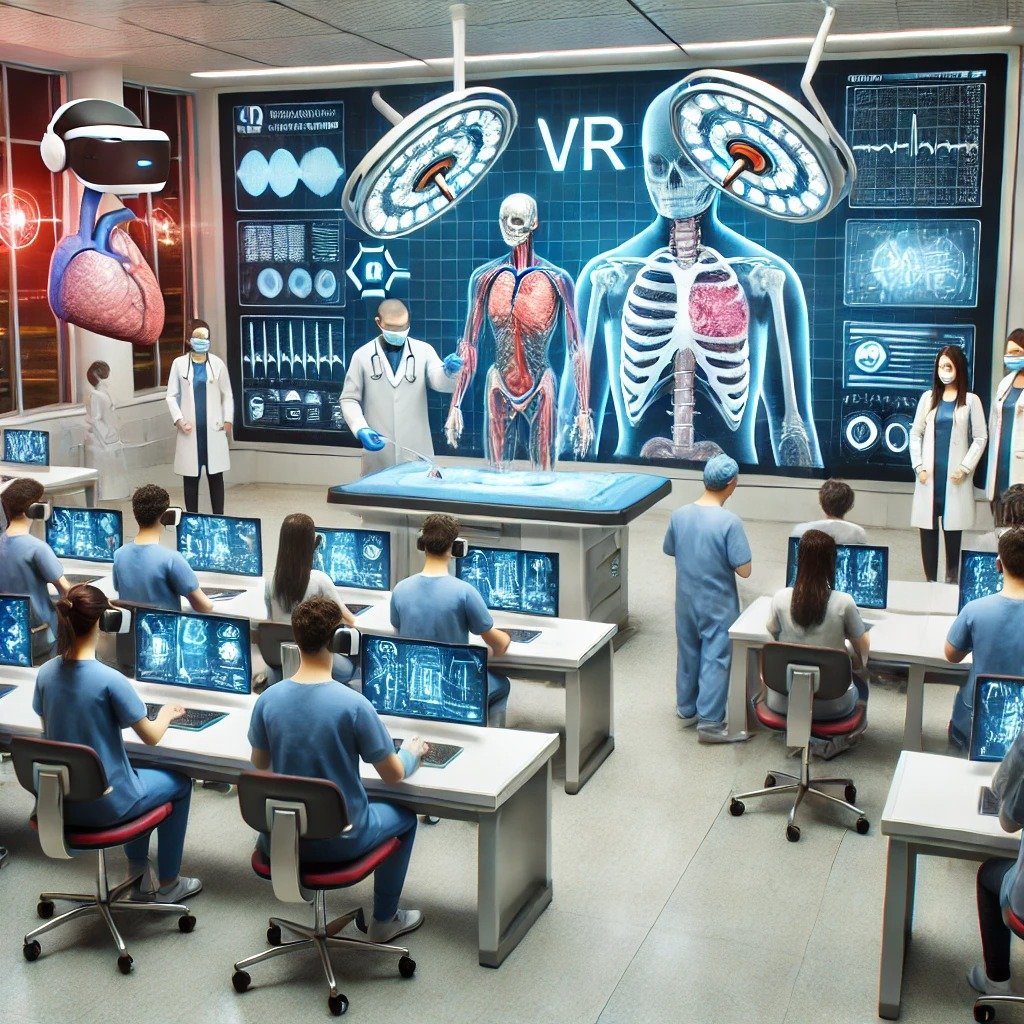Technology's Function in Medical Education

Nearly every element of our life has been changed by technology; healthcare education is no exception. Technology is changing medical professionals’ training from virtual reality (VR) simulations to artificial intelligence (AI)-powered learning tools, so improving efficiency, and patient care.
Augmented and Virtual Reality in Medical Education
The use of virtual reality (VR) and augmented reality (AR) is one of the biggest developments in healthcare education. Medical students can practice surgeries, medical procedures, and patient interactions in realistic, immersive training environments thanks to these technologies. Students can now engage with 3D models of the human body to better understand anatomy and physiological processes rather than depending only on textbooks and conventional classroom lectures.
For instance, before operating on actual patients, students can practice surgical procedures in a risk-free setting thanks to virtual reality. In addition to increasing confidence, this practical method lowers errors in real-world clinical settings.
Personalized Learning and Artificial Intelligence
By offering individualized learning opportunities, artificial intelligence (AI) is transforming medical education. AI-driven platforms can assess students’ strengths and weaknesses, offering customized study plans and real-time feedback. Chatbots and AI tutors help students understand complex medical concepts, making learning more interactive and accessible.
Furthermore, AI is used to analyze medical cases, helping students develop diagnostic skills. With AI-driven simulations, students can practice diagnosing diseases based on symptoms, medical history, and test results, thus improving their clinical decision-making abilities.
Remote Education and E-Learning Platforms
Students all over the world now have easier access to healthcare education thanks to the growth of online learning platforms. These days, medical schools let students study at their own pace with online classes, webinars, and virtual classrooms. These platforms guarantee a thorough learning experience by including interactive case studies, discussion boards, quizzes, and video lectures.
Remote learning became vital during the COVID-19 pandemic, and technology was vital in keeping medical education going unhindered. E-learning is still a useful tool even after the pandemic, giving students from all over the world access to top-notch instruction without being limited by geography.
Robotics and Simulation-Based Education
With the help of robotics and sophisticated mannequins, medical simulations give students practical experience in patient diagnosis and treatment. By simulating actual medical situations, these simulators allow students to practice skills like emergency response, CPR, and intubation. Before engaging with actual patients, students can hone their skills and boost their confidence by using robotic simulators.
Healthcare Education’s Future
The future of healthcare education appears bright as long as technology keeps developing. Big data analytics, wearable health technology, and 5G networks will all be combined to improve learning opportunities and increase the effectiveness and efficiency of medical education. Blockchain technology can also be used to safely store certifications and medical records, guaranteeing their authenticity and transparency.
In conclusion
Technology is transforming healthcare education by increasing its effectiveness, accessibility, and interactivity. The next generation of medical professionals is being shaped by these developments, which range from AI-driven learning tools to VR-based surgical simulations. The healthcare sector will gain from highly qualified, well-trained professionals who are prepared to deliver superior patient care as long as we continue to embrace innovation.
